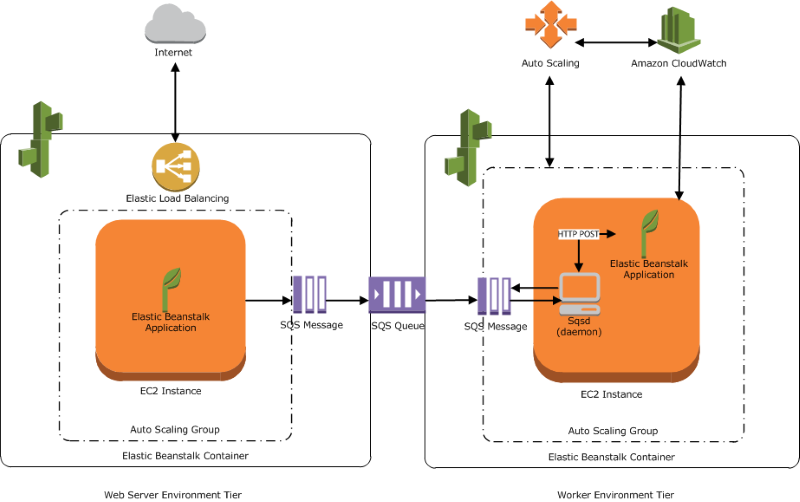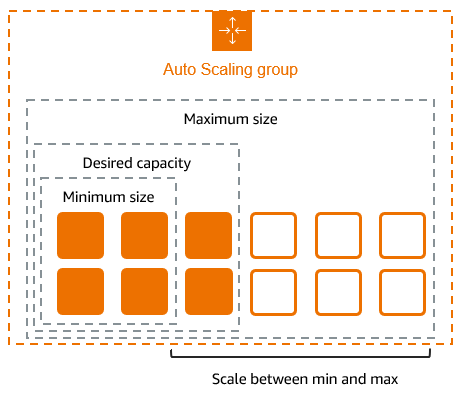If you are preparing for an AWS interview, here are some important questions on Compute Services. These questions will help you explore the core aspects of AWS Compute services, with a focus on cost optimization, security, scalability, and service-specific use cases.
1. Explain the difference between Amazon EC2 and AWS Lambda.
Answer:
- Amazon EC2 provides virtual servers to host applications. You have control over the operating system, the instance type, and configurations. It is ideal for applications requiring consistent and predictable performance.
- AWS Lambda is a serverless compute service where you run code in response to events. It abstracts server management and automatically scales based on the workload.
2. How do you optimize costs for EC2 instances?
Answer:
- Use Reserved Instances or Savings Plans for predictable workloads.
- Use Spot Instances for non-critical workloads that can tolerate interruptions.
- Employ Auto Scaling Groups to dynamically adjust instance capacity.
- Right-size instances using the Compute Optimizer.
- Terminate unused or underutilized instances.
3. What are the differences between EC2 Auto Scaling and Elastic Load Balancing (ELB)?
Answer:
- EC2 Auto Scaling ensures the number of EC2 instances adjusts automatically based on demand, maintaining performance and cost-efficiency.
- ELB distributes incoming application traffic across multiple targets, such as EC2 instances, to improve fault tolerance and high availability.
4. How would you secure an EC2 instance?
Answer:
- Restrict access using security groups and network ACLs.
- Use IAM roles for secure instance authentication.
- Regularly update and patch the operating system.
- Encrypt data at rest using EBS encryption and in transit using TLS/SSL.
- Enable CloudWatch for monitoring and CloudTrail for logging.
5. What is AWS Fargate, and how is it different from running containers on ECS or EKS?
Answer:
- AWS Fargate is a serverless compute engine for containers. It abstracts server management, allowing developers to focus on container deployment.
- In ECS/EKS, you must manage the underlying infrastructure, such as EC2 instances or Kubernetes nodes.
6. Can you explain EC2 instance lifecycle states?
Answer:
- Pending: Instance is being launched.
- Running: Instance is operational.
- Stopping/Stopped: Instance is shutting down or turned off.
- Terminating/Terminated: Instance is permanently deleted.
7. What is the purpose of placement groups in EC2, and what types are available?
Answer:
- Placement groups are used to influence the placement of instances for optimized networking or redundancy. Types include:
- Cluster: Instances in close proximity for low-latency, high throughput.
- Spread: Instances across hardware to reduce risk of failure.
- Partition: Instances in partitions to segregate workloads.
- Cluster: Instances in close proximity for low-latency, high throughput.
8. How do you handle instance failures in AWS?
Answer:
- Use Auto Scaling Groups to automatically replace failed instances.
- Enable CloudWatch Alarms to trigger notifications for unhealthy instances.
- Use ELB Health Checks to ensure traffic is routed only to healthy instances.
9. What is the difference between Elastic Beanstalk and EC2?
Answer:
- Elastic Beanstalk is a PaaS service that abstracts infrastructure management, allowing developers to deploy applications quickly.
- EC2 offers raw compute resources with complete control over the environment.
10. How does AWS ensure fault tolerance in its compute services?
Answer:
- Use Auto Scaling Groups across multiple Availability Zones.
- Use ELB to distribute traffic.
- Design applications to be stateless and leverage S3 or DynamoDB for data storage.
- Use multi-region deployments for disaster recovery.
11. What are EC2 Reserved Instances, and how are they different from Spot Instances?
Answer:
- Reserved Instances provide a discount in exchange for a long-term commitment (1 or 3 years). They are ideal for predictable workloads.
- Spot Instances offer unused capacity at a discounted rate but can be terminated by AWS when capacity is needed.
12. Explain the differences between AWS Batch and AWS Lambda.
Answer:
- AWS Batch is designed for batch processing and allows fine-grained control over resource allocation for high-performance computing jobs.
- AWS Lambda is event-driven and ideal for smaller, stateless, on-demand tasks.
13. How does Elastic Load Balancer work with Auto Scaling?
Answer:
ELB routes traffic to instances in the Auto Scaling Group. When the group scales out, ELB adds new instances to the pool. When it scales in, ELB removes terminated instances.
14. What are Dedicated Hosts, and when would you use them?
Answer:
Dedicated Hosts provide physical servers exclusively for your use. They are ideal for meeting compliance requirements or using existing software licenses.
15. What is the purpose of Amazon Lightsail, and how does it differ from EC2?
Answer:
- Amazon Lightsail simplifies cloud hosting by bundling compute, storage, and networking for small applications.
- EC2 offers granular control and is more suited for large-scale, complex applications.
Conclusion:
For individuals seeking to construct reliable, scalable, and economical cloud solutions, mastering AWS Compute services is crucial. Having familiarity with EC2, Lambda, Fargate, and other services enables you to make insightful architectural decisions based on distinct organizational needs. Learning these interview questions will prepare you for difficult conversations and strengthen your capability to design optimized and secure environments on AWS. You are prepared to face challenges with these concepts covered, and that sets the path to succeed in the cloud world.



